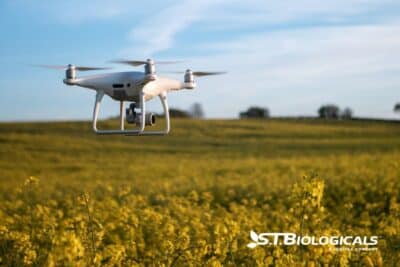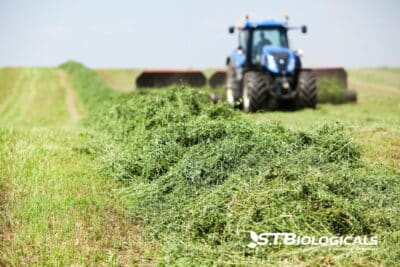What does conventional soil testing measure? And how do those tests measure what’s in the soil sample? How much is it like the conditions you find in your field?
These are the questions Liz Haney asked as she and her partner developed the Haney test. They were frustrated with conventional soil testing that focused on physical and chemical factors. Conventional soil testing, including the most commonly use Mehlich-3 test, measures for NPK, soil pH, and some micronutrients. Conventional tests are easy to interpret and inexpensive. But they do not look at the biology in the soil. Conventional soil testing labs also use harsh chemicals you wouldn’t find in your field. How accurate can they be?
Haney Soil Testing Replicates Nature
Nutrient cycling is more efficient during drying and rewetting cycles. Plants are greener after rain not only because of the moisture, but because they experience a release of nitrogen (N) and phosphorus (P) from biology in the soil. If this is how the nutrient cycle works, and it’s dependent on microbes for efficiency, then soil tests should account for them.
That’s what the Haney test does. In the lab, a Haney test uses H2O (water) and H3O (hydronium), a plant root exudate, as solvents. Soil has nutrients in many different chemical forms, some more available for plant uptake and microbial food.
Inorganic and organic forms of nitrogen and phosphorus are found in the soil, but plants prefer the organic forms. Most farms apply urea or UAN, but a great deal of these nutrient is in a form unavailable for plant uptake. It’s also quickly lost to the atmosphere if not protected or worked into the soil.
When soil is microbially active, you get the full benefit of the nitrogen sources because microbes break it down. The Haney Test measures both the organic and inorganic forms, then adds them so you know exactly how much possible fertility you have in your fields.
The Metrics on a Haney Test
You want to know what’s in your soil. You also want to know how that’s going to impact your crop yield and pasture nutrient profile for livestock health. A soil respiration table is a valuable tool for gauging microbial activity. It is valuable because it indicates the microbial activity in soil. Respiration tables are site-specific. You can’t compare a semi-arid field in Idaho with a high-rain area like Appalachia. Knowing about your biology helps to understand the potential of nutrients in your soil.

Breaking down a Haney test into its components makes it easier to understand. Let’s take a closer look.
Nitrogen
Nitrogen is measured with both H2O and H3O. The H2O gives you the response of the soil, nutrients, and microorganisms to rainfall. The H3O gives you the measurement of nitrate/carbon based (organic) ammonium (inorganic), and the total nitrogen in the soil, replicating the response of the soil chemistry to the plant exudates.
Phosphorus
The different forms of phosphorus are impacted by plant root exudates. Mimicking nature in these tests gives you a much better idea of the condition of your fields under real-life conditions.
Haney tests are relatively new. Technology allows us to make better decisions on farming practices.
Fertility, Soil Health, and Other Soil Measures
Soil pH is a critical factor in microbial activity and nutrient cycling. It impacts soil fertility and the balance of micro and macro nutrients. The Haney test measures these factors by mimicking plant root exudates.
Of course, all these measurements have to take into account what your goals are for your fields. What crops you’re planning and what farming practices you’ll be using determine the nutrient recommendations.
The results of the Haney test provide a better indication of real field conditions than the Mehlich-3 test can. Using a test that mimics nature moves the focus to how to maintain fertility and yield. This is in stark contrast to measuring how soil responds to harsh chemicals in a lab setting.
Which test do you think would give you the best measure of the profit potential of your farm? For more information and guidance on soil testing and how to read a Haney test, contact our team at ST Biologicals. We’re here to help you succeed. When soil speaks, we listen.

